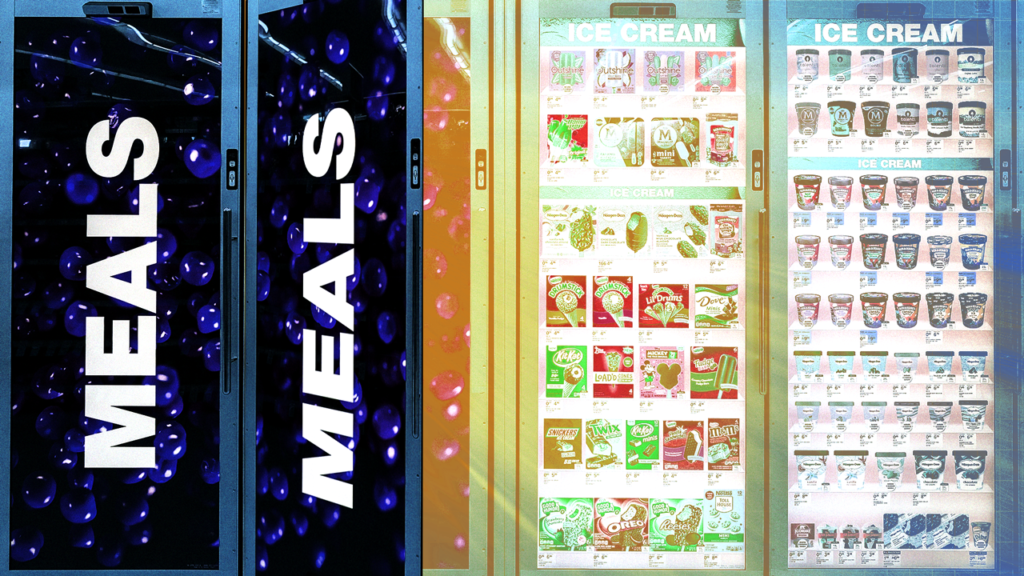At SXSW, Paramount+ caused a big commotion when it deployed 400 LED-equipped drones to form an out-of-home (OOH) ad – a massive QR code suspended in midair – to promote its Halo series. But a new ad format is making it clear that not even the sky is the limit for OOH advertisers.
Now, running digital OOH ads in the freezer aisle is an option thanks to a startup called Cooler Screens, whose interactive technology has been transforming clear freezer doors of major retailers like Walgreens and CVS into opaque digital displays that showcase product inventory and promos.
Using a system of motion sensors and cameras, the screens display exactly what’s inside the freezers as well as product prices, deals, nutritional information and paid ads.
All for the purpose of streamlining the store shopping experience and enabling brands to connect with consumers at point-of-sale. The Cooler Screens’ targeted digital ads deliver at the “moment of truth,” right as consumers decide which product to pull out of the fridge, Cooler Screens chief executive Arsen Avakian said.
The Chicago-based startup has nearly 10,000 screens in stores, which are viewed by about 90 million consumers monthly, according to the company. Avakian told CNN he developed the concept after watching in-store customers use their phones to search for product information and reviews.
Companies pay Cooler Screens to run screen ads and retailers receive a cut. Walgreens started testing the screens in 2018 and has since expanded the pilot to several thousand locations nationwide, reports CNN. Other major retailers including Kroger, CVS, GetGo and Chevron are launching their own tests.
The screens irked some Walgreens customers. One Twitter user vented, “@Walgreens NOBODY needs TV screen replacing doors in your cooler aisles…. Stop,” while another lamented the screens, saying they “made me watch an ad before it allowed me to know which door held the frozen pizzas.”
Still, the DOOH concept has piqued the interest of Nestle, Coke, Pepsi and Kraft Heinz, and has raised over $100 million from backers like Verizon and Microsoft. In June 2020, Verizon and Cooler Screens inked a long-term agreement that would see Verizon Business powering the screens’ digital media and merchandising platform.
Verizon said it would be the primary supplier of DOOH ads in top Walgreen store locations in the US including Chicago, New York City, San Francisco and Seattle, reaching over 75 million shoppers monthly within a year, according to a press release.
Like the massive QR code Paramount+ launched in the sky, the Cooler Screens might be perceived as intrusive by shoppers. But Avakian sees it as an expected growing pain. In response, he said the company plans to educate customers about the digital displays and launch features like voice recognition so shoppers can ask about prices or item locations.
The company also wants to bring its digital displays to a range of retailers including those in beauty, consumer electronics and home improvement.
Projected to reach $27 billion by 2025, DOOH advertising is a booming market and an appealing marketing tactic because it allows advertisers to track ad performance in real-time. They can test, modify and update creative mid-campaign based on metrics, making DOOH a cost-effective way to reach consumers in high-traffic areas.
The tech-fueled, visually dynamic format has proven especially useful for the industry after the pandemic devastated the OOH media segment, spending on which dropped by 29.7 percent in 2020.

